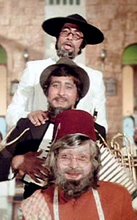So who are the five greatest dismal scientists of all time? I was a part of this High Fidelity moment — Monday morning list of all time tops — recently. We agreed on Adam Smith, David Ricardo and John Maynard Keynes quite quickly. Adam Smith, the universally acclaimed founder of the discipline, was chosen unanimously.
Economists are notorious for their disagreements — their habit of caveating every statement with ‘on the other hand…’ led to an exasperated Harry Truman demanding ‘a one‑handed economist’. But all economists agree on one thing — in most circumstances in theory, and almost in all circumstances in practice, free trade is optimal. And this is because of the exposition of the idea of comparative advantage by David Ricardo in the first half of the 19th century. Hence the inclusion of David Ricardo was no surprise.
The inclusion of Keynes was also near unanimous, even though not all of us agreed why he should be included. Our disagreement rested on the definition of ‘greatest’. There seemed to be three definition of the term.
At the broadest, greatest meant greatest influence, for good or evil, over the greatest number of people. On this count, we agreed that Keynes, along with Karl Marx and Milton Friedman were the three other greatest economists.
What were Keynes’s ideas? Here is how Paul Krugman (more on him below) summarizes the General Theory.
- Economies can and often do suffer from an overall lack of demand, which leads to involuntary unemployment.
- The economy’s automatic tendency to correct shortfalls in demand, if it exists at all, operates slowly and painfully.
- Government policies to increase demand, by contrast, can reduce unemployment quickly.
- Sometimes increasing the money supply won’t be enough to persuade the private sector to spend more, and government spending must step into the breach.
And here is how Milton Friedman sees Keynes.
We had no problem in including Marx because of his influence. While much of Marxism seems to be consigned to the dust bin of history, is there anything he said that is still relevant? This is what Tyler Cowen says.
- Capitalism can produce less autonomy than small scale production.
- There is an alternative idea of freedom, namely freedom from the market.
- The benefits of industrialization take a long time to kick in.
- Being happy at work is one of the most important things in life.
- A growing division of labor can make some people unhappier at their jobs.
And as for Milton Friedman, well as we noted last year, Foreign Policy readers voted him as one of the most influential intellectuals of our time (even though the magazine thought Friedman was no longer active).
But there were other definition of ‘greatest’. A second definition involves a fundamental insight or advancement of knowledge. Here we dropped Marx, but most of us kept Keynes because without him, macroeconomics as a field of study would not exist. We cover macroeconomics here, Greg Mankiw, unsurprisingly, does a much better job. Friedman we were less sure about. While his ideas (you can watch them here) have been immensely influential, we thought that the fundamental insights of Kenneth Arrow (welfare analysis), Ronald Coase (transaction costs and property rights) and Gary Becker (economics can explain all human behavior) were no less groundbreaking than those of Friedman (the permanent income hypothesis and the natural rate of unemployment).
A third definition of ‘greatest’ was whose theories people actually learn in mainstream economics courses in Anglophone universities. On this criterion, we agreed to put Alfred Marshall (for drawing supply and demand curves) and Paul Samuelson (for mathematizing the discipline and writing the best textbook ever) in the list with Smith, Ricardo and Keynes.
If you want to read more about great dismal scientists, this has Friedman’s list.
